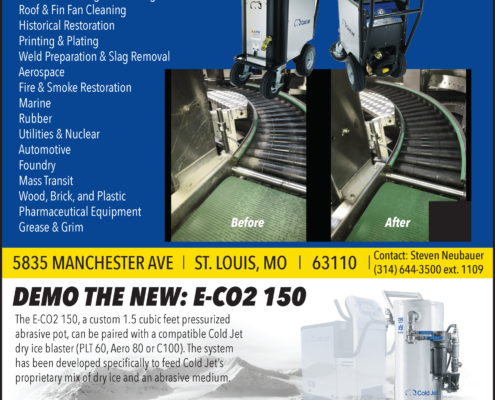Benefits of Dry Ice Blasting
In addition to being faster and cleaner than traditional sandblasting; using dry ice blasting instead of sandblasting has several benefits including:
- Increased safety measures since there’s less risk of injury from flying debris
- Reduced costs due to lower material consumption
- Improved efficiency due to its non-abrasive nature
- Enhanced surface preparation capabilities since it does not damage substrates like wood or metal
These benefits make dry ice blasting an attractive option for decision-makers who need to get the job done quickly and efficiently but don’t want to sacrifice quality in the process.
Drawbacks of Dry Ice Blasting
Dry ice blasting has some environmental issues, such as producing carbon dioxide gas and requiring specialized equipment for safe use. It can be expensive to purchase or rent the necessary equipment and to dispose of the used dry ice. This method can also be slower than other cleaning solutions, resulting in slower production speeds for factories or large facilities. Additionally, dry ice blasting may not effectively remove certain substances such as oils, waxes, and adhesives.
Benefits of Sandblasting
Sandblasting is incredibly versatile as it can be used for a wide range of applications in many industries including automotive repair and restoration, metal working, marine maintenance, masonry work and more. Additionally, sandblasting is cost effective compared to alternative methods of cleaning and refinishing surfaces due to its speed and efficiency. It is safe for both workers and the environment when done correctly with the proper safety precautions in place.
This process works to remove dirt, grease, and other contaminants that accumulate over time on surfaces. Sandblasting is also great for removing old paint, rust, and other stubborn materials quickly and efficiently. When done correctly, sandblasting can help restore surfaces to their original condition while also improving the overall look and feel of the surface.
Drawbacks of Sandblasting
However, it can also come with certain challenges and drawbacks. Sandblasting produces large amounts of dust, which creates a mess that requires extensive cleanup after the process is completed. In addition, sandblasting has the potential to damage delicate surfaces if not done correctly. This can lead to costly repairs and even replacement of equipment or materials.
Another drawback of sandblasting is that it can generate hazardous silica dust, which can be harmful to health if inhaled in large quantities. Lastly, the cost of sandblasting materials such as sand and abrasive media can be expensive depending on the project size and scope. Although there are many benefits to using sandblasting techniques, it is important to weigh these challenges against their potential benefits before committing to any project.
CK Supply Is Here for Your All of Your Dry Ice Needs
To recap dry ice blasting vs. sandblasting, dry ice blasting offers many advantages over traditional sandblasting methods including increased speed and efficiency, reduced costs associated with material usage, increased safety due to less risk of injury from flying debris, improved surface preparation capabilities without damage caused by abrasives, and ultimately better results overall compared to traditional methods of cleaning surfaces using abrasives such as sand or glass beads. For industries looking for ways to save time, money, and effort while still getting top-notch results, dry ice blasting may just be their answer, and CK Supply is here for all of your company’s dry ice needs.




